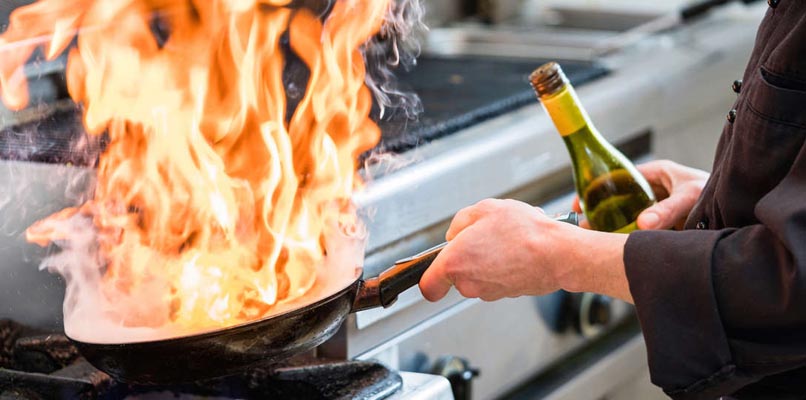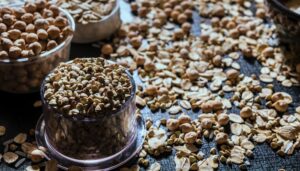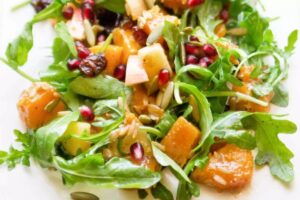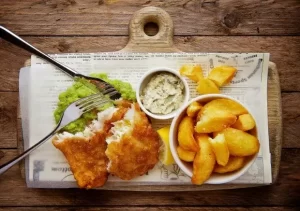
Cooking with alcohol has been a culinary tradition for centuries, providing a unique touch to various dishes. From hearty stews to delectable desserts, alcohol is used in many recipes to enhance flavors, aromas, and textures. But what is the reason behind this culinary practice? In this article, we will delve deep into the art and science of why we cook with alcohol, exploring its benefits, techniques, and the impact it has on the final product. So, let’s raise our glasses and uncover the secrets of alcohol in the kitchen!
Why Do We Cook with Alcohol?
When it comes to culinary exploration, alcohol has proven to be a versatile and invaluable ingredient. But what makes it so essential in the world of cooking? Let’s explore the key reasons behind why we cook with alcohol:
1. Flavor Enhancement: Elevating Taste Profiles
Alcohol has the remarkable ability to enhance the flavors of various ingredients. When added to a dish, it can extract and amplify the natural essences of herbs, spices, and other components. Whether it’s a savory sauce or a sweet dessert, alcohol can lend a depth of taste that is hard to replicate with other methods.
2. Evaporating Alcohol: Preserving Aromas
During the cooking process, alcohol evaporates at a lower temperature than water. This characteristic allows it to retain the aromatic compounds present in the dish, heightening the overall sensory experience. The evaporation process ensures that the dish doesn’t become overly alcoholic, leaving behind a delightful balance of flavors.
3. Tenderness and Texture: Breaking Down Fibers
Alcohol’s acidic properties can tenderize tough cuts of meat and fibrous vegetables. When used in marinades or slow-cooking, it helps break down protein structures, resulting in succulent and tender dishes. Additionally, alcohol can create delightful textures in baked goods, such as light and fluffy cakes or flaky pastries.
4. Heat Transfer: Cooking Uniformly
Alcohol is an excellent conductor of heat, ensuring even distribution during the cooking process. This feature enables the dish to cook uniformly, preventing uneven spots that could potentially lead to undercooked or overcooked portions.
5. Binding and Emulsifying: Creating Harmonious Mixtures
In certain recipes, alcohol acts as a binding agent, helping ingredients adhere together. It also serves as an emulsifier, ensuring that oil and water-based components blend seamlessly. The result is a harmonious mixture with a consistent texture.
6. Unlocking Flavors: Deglazing and Reduction
One popular technique in cooking with alcohol is deglazing. By adding alcohol to a hot pan and scraping the browned bits, known as fond, from the bottom, chefs can unlock rich flavors. Additionally, alcohol’s reduction process concentrates flavors, intensifying the taste of the dish.
7. Introducing Variety: Experimentation and Creativity
Cooking with alcohol opens up a world of possibilities for experimentation and creativity in the kitchen. Different types of alcohol, such as wine, beer, spirits, or liqueurs, offer distinct flavor profiles, allowing chefs to customize recipes and create unique dishes.
8. Cultural Significance: Preserving Traditions
Throughout history, various cultures have incorporated alcohol into their traditional dishes. Cooking with alcohol not only preserves these culinary traditions but also pays homage to the heritage and customs of a particular region.
9. Enhancing Desserts: Elevating Sweet Treats
Alcohol adds a delightful twist to desserts, infusing them with unique flavors and aromas. From rum-soaked cakes to wine-infused sorbets, alcohol can transform ordinary sweets into extraordinary indulgences.
10. Social and Festive Atmosphere: Shared Experiences
Cooking with alcohol is often associated with joyous occasions and celebrations. It fosters a social atmosphere in the kitchen, where people come together to prepare and enjoy meals, making cooking an interactive and enjoyable experience.
Cooking Techniques with Alcohol
Now that we’ve explored the reasons why we cook with alcohol, let’s dive into the various cooking techniques that involve this versatile ingredient:
1. Marinating: Infusing Flavors
Marinating meat, seafood, or vegetables in alcohol-based mixtures not only tenderizes the ingredients but also imparts a unique depth of flavor. LSI Keywords: Marinating with Alcohol, Alcohol-Based Marinades.
2. Deglazing: Capturing Fond
Deglazing a pan with alcohol after sautéing meat or vegetables helps capture the flavorful fond and creates a rich sauce or gravy. LSI Keywords: Alcohol in Deglazing, Capturing Flavors with Alcohol.
3. Flambé: Spectacular Presentation
Flambéing involves igniting alcohol to create a dramatic burst of flames, adding both visual appeal and a hint of caramelized flavor to the dish. LSI Keywords: Flambé Technique, Alcohol in Flambéing.
4. Braising: Slow-Cooking Magic
In braising, meat or vegetables are cooked slowly in a covered pot with liquid, often including alcohol, resulting in tender and flavorful dishes. LSI Keywords: Braising with Alcohol, Alcohol in Slow-Cooking.
5. Reduction: Concentrating Flavors
Reducing alcohol by simmering it in a pan concentrates its flavors, resulting in a rich and intense sauce or glaze for the dish. LSI Keywords: Alcohol Reduction Technique, Concentrated Alcohol Flavors.
6. Baking: Moist and Flavorful Goods
Alcohol can add moisture and flavor to baked goods like cakes, muffins, and pastries, creating delightful textures and tastes. LSI Keywords: Baking with Alcohol, Alcohol in Baked Goods.
FAQs: Answering Common Queries
Can I use any type of alcohol for cooking?
Yes, you can use various types of alcohol depending on your recipe. Wine, beer, spirits, and liqueurs each offer distinct flavors that can complement different dishes.
Does all the alcohol evaporate during cooking?
No, some alcohol may remain after cooking, but the amount reduces significantly. The longer the dish cooks, the more alcohol evaporates.
Can I cook with non-alcoholic alternatives?
Yes, you can substitute alcohol with non-alcoholic alternatives like fruit juices or broths, but they may not impart the same depth of flavor.
Does cooking with alcohol make the dish unsafe for children?
Cooking with alcohol reduces its alcoholic content significantly, making it safe for children to consume most dishes.
Which dishes pair well with wine as an ingredient?
Wine is a versatile cooking ingredient that pairs well with various dishes, including pasta, risotto, poultry, and red meat dishes.
How much alcohol should I use in a recipe?
The amount of alcohol used depends on the recipe and personal preference. It’s best to start with a small quantity and adjust to taste.
Conclusion
Cooking with alcohol is an art that unlocks a world of flavors, textures, and aromas. From enhancing taste profiles to preserving culinary traditions, alcohol plays a pivotal role in elevating dishes to new heights. So, the next time you step into the kitchen, don’t hesitate to embrace this versatile ingredient and embark on a culinary adventure like no other. Cheers to the wonders of cooking with alcohol!







